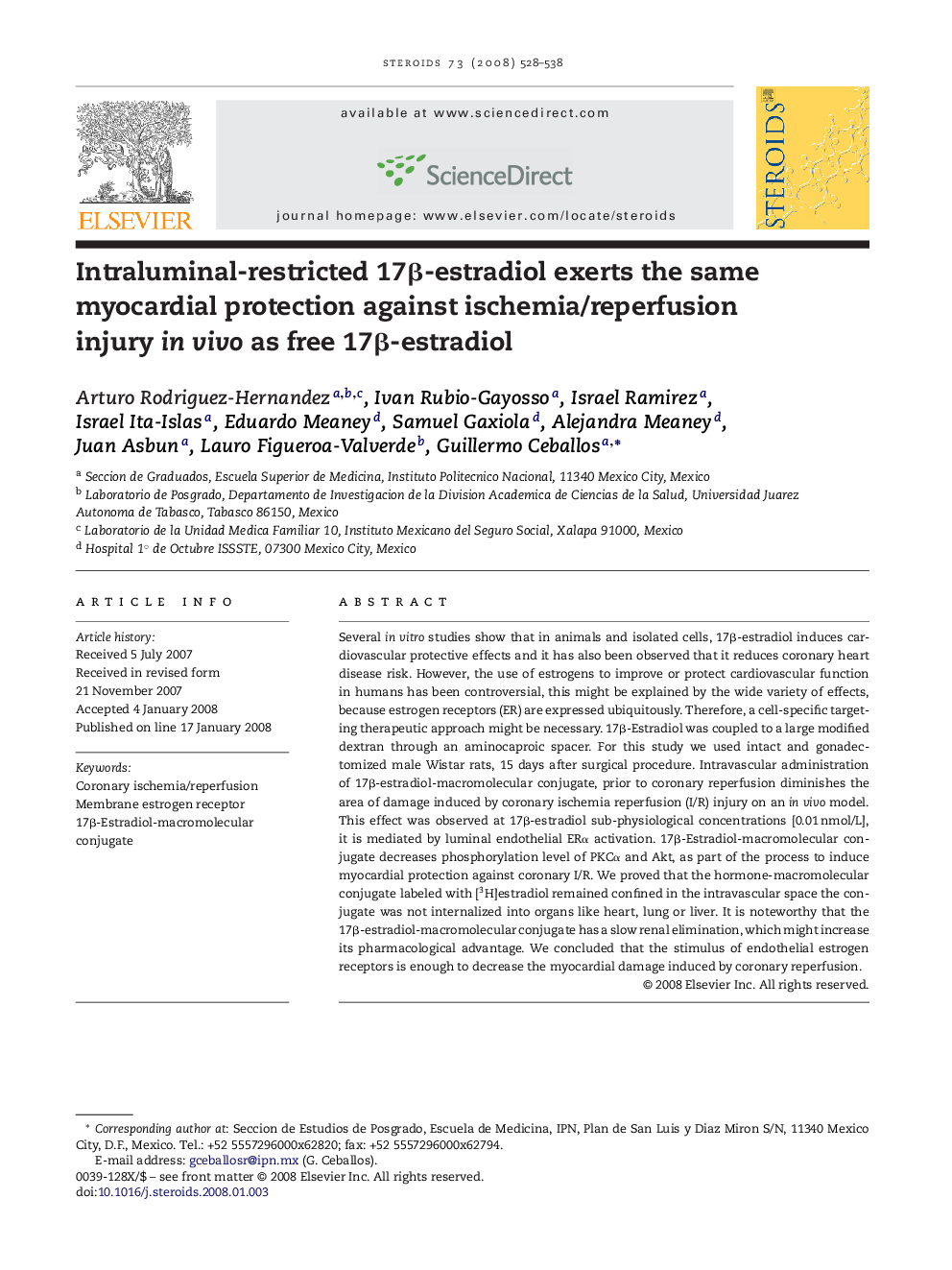| Article ID | Journal | Published Year | Pages | File Type |
|---|---|---|---|---|
| 2028855 | Steroids | 2008 | 11 Pages |
Several in vitro studies show that in animals and isolated cells, 17β-estradiol induces cardiovascular protective effects and it has also been observed that it reduces coronary heart disease risk. However, the use of estrogens to improve or protect cardiovascular function in humans has been controversial, this might be explained by the wide variety of effects, because estrogen receptors (ER) are expressed ubiquitously. Therefore, a cell-specific targeting therapeutic approach might be necessary. 17β-Estradiol was coupled to a large modified dextran through an aminocaproic spacer. For this study we used intact and gonadectomized male Wistar rats, 15 days after surgical procedure. Intravascular administration of 17β-estradiol-macromolecular conjugate, prior to coronary reperfusion diminishes the area of damage induced by coronary ischemia reperfusion (I/R) injury on an in vivo model. This effect was observed at 17β-estradiol sub-physiological concentrations [0.01 nmol/L], it is mediated by luminal endothelial ERα activation. 17β-Estradiol-macromolecular conjugate decreases phosphorylation level of PKCα and Akt, as part of the process to induce myocardial protection against coronary I/R. We proved that the hormone-macromolecular conjugate labeled with [3H]estradiol remained confined in the intravascular space the conjugate was not internalized into organs like heart, lung or liver. It is noteworthy that the 17β-estradiol-macromolecular conjugate has a slow renal elimination, which might increase its pharmacological advantage. We concluded that the stimulus of endothelial estrogen receptors is enough to decrease the myocardial damage induced by coronary reperfusion.
